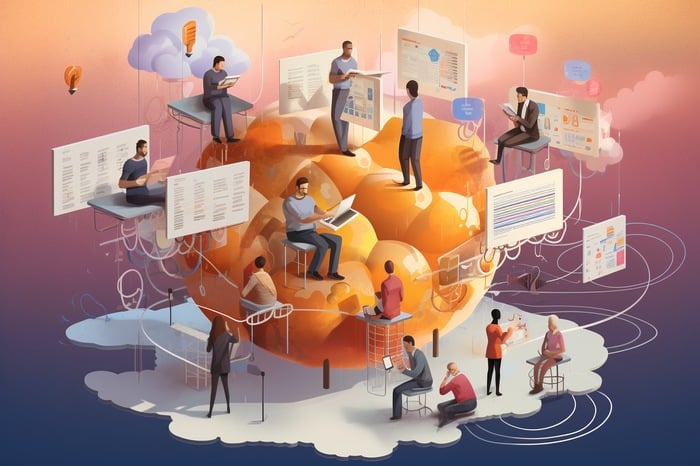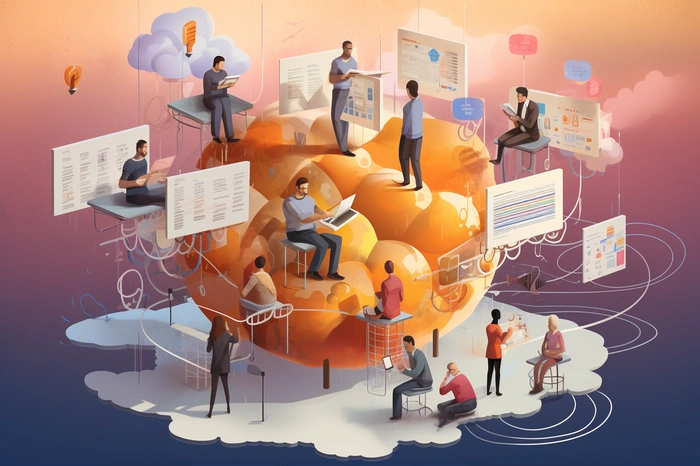Data has become the lifeblood of modern enterprise; its flow is now vital. A company’s ability to convert and digest data offers a competitive edge, insight into business trends, and informed decision-making. Artificial intelligence, or AI, has taken the helm in driving a transformative revolution in the process of data conversion and analysis. The ever-evolving AI landscape has brought about seismic shifts, with AI-equipped technologies radically altering the handling of vast quantities of data. Let us delve into how AI is redefining the field of data conversion and analysis, instigating revolutions worldwide.
AI Ascending: Data Conversion Reimagined
Data conversion was once a laborious manual task. Human error was rife, and efficiency was an alien concept. But AI has altered this narrative. It automates these processes, replacing human fallibility with unerring accuracy. With robust algorithms, AI swiftly morphs unstructured data from myriad sources into structured formats that are easy to analyze. m. These algorithms analyze complex patterns within text or images, aiding businesses in their pursuit of data-driven decisions.
This level of automation is not just a time-saver but also brings down errors during manual conversions appreciably.
Data Conversion with Technology
With the help of a data conversion company that uses cutting-edge AI technology and algorithms to transform unstructured data into actionable insights, business can transform their data analysis process. Such data conversion companies utilize advanced capabilities such as natural language processing (NLP) and computer vision to handle a plethora of diverse data types like text documents, images, audio files, and videos effectively.
Machine learning models that draw lessons from extensive datasets are employed by these companies to extract information from unstructured sources accurately. Patterns are identified, language nuances processed, and images or videos recognized with exceptional precision by these models. This high level of automation saves valuable time while minimizing errors associated with manual processes. AI ingeniously deciphers complex patterns within textual or visual data aiding businesses in making informed decisions.
Amplifying Efficiency in Data Analysis
AI’s bearing on data analysis also needs mentioning, enhancing efficiency and accuracy alike. Traditional methods often require manual intervention leading to delays and potential inaccuracies – but not anymore. With tools powered by AI at their disposal, businesses can automate the process of data analysis, enabling speedy decision-making based on real-time insights.
Machine learning algorithms enable AI tools to analyze colossal datasets in a fraction of the time that a human analyst would need. These tools intelligently identify trends within data sets and highlight outliers or correlations, thereby helping businesses uncover hidden patterns to inform data-driven decisions. This level of automation allows businesses to scale data analysis efforts without significant additional resources.
Influencing Data Entry
Beyond conversion lies another arena transformed by AI: data entry. An essential aspect in maintaining accurate databases, manual data entry processes are prone to errors and often time-consuming. The new breed of data entry services powered by AI leverages optical character recognition (OCR) technology to extract information from physical or digital documents with pinpoint accuracy.
These services utilize advanced models capable of processing scanned documents, invoices, receipts, and customer forms swiftly and without error. By eliminating the need for manual processes, businesses reduce error margins, increase productivity, and distribute resources more efficiently. Moreover, these AI-driven services facilitate handling large volumes of data effectively.
As we traverse through the era of big data and digital transformation, AI’s pivotal role in reshaping how organizations convert and analyze their invaluable data cannot be overstated. The rise of technologies powered by AI has enabled businesses to streamline their processes improving accuracy while enhancing efficiency. Further advancements like AI-driven services have empowered organizations to minimize errors while maximizing productivity when dealing with vast amounts of information.
The Conclusion
By embracing these developments, companies stand ready to tap into the potential offered by AI – gaining valuable insights that drive business decisions keeping them at the forefront of an intensely competitive landscape. As this field evolves further with technological advancements yet unseen, we can only anticipate continued innovation that will redefine the fields of data conversion and analysis unlocking unimagined potential across industries worldwide. Using the power that is AI in your organization’s approach toward managing its invaluable cache of data could indeed open doors previously unknown.




